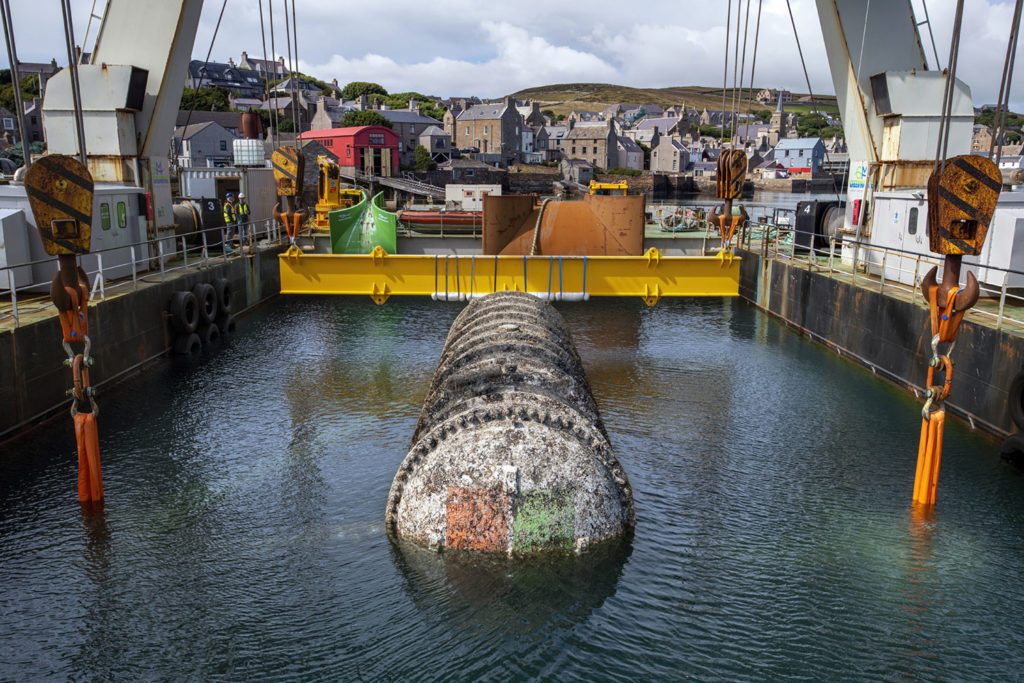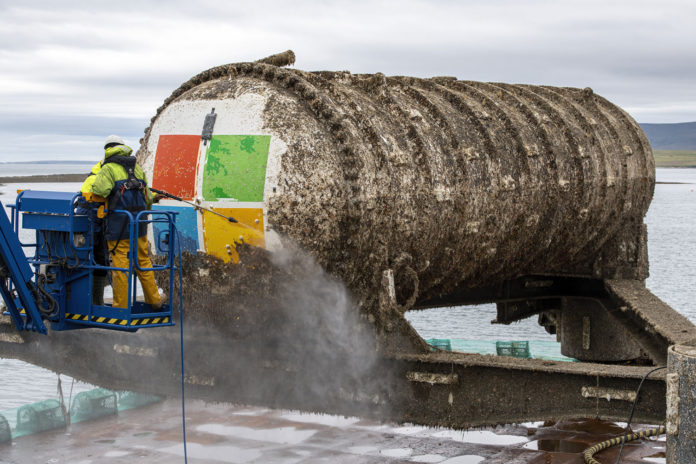In spring 2018, Microsoft’s Project Natick team deployed the Northern Isles datacenter 117 feet deep to the seafloor off Scotland’s Orkney Islands. After testing and monitoring the performance and reliability of the datacenter’s servers for the next two years, the team has now retrieved the shipping-container-size datacenter coated in algae, barnacles, and sea anemones from the seafloor. And it seems that it has been a success.
They found that the concept of underwater datacenters is feasible, as well as logistically, environmentally, and economically practical.
Microsoft began experimenting with sinking datacenters into the ocean as early as 2015 when it was allowed to spend 105 days underwater off the coast of California. In the latest test, however, the datacenter was submerged in the sea over two years, and Microsoft describes the project of sinking servers in the sea as a good idea, as they are, among other things, reliable and practical, but also use energy sustainably.

In the water-tight steel tube that encased the Northern Isles’ servers and related cooling system infrastructure, there were 12 server racks carrying 864 servers that together can store 37.6 petabytes of data.
To begin with, instead of “conserving” the servers with the atmosphere that we have on the surface, the container was filled with dry nitrogen. Unlike conventional datacenters, it did not have active cooling, but all the cooling it obtained came from the seawater pumped through radiators behind the racks and back out into the sea.
According to the company, the regularity of the temperature underwater, the atmosphere of nitrogen, which is less corrosive than oxygen, and the absence of people to bump and jostle components, are the primary reasons for the difference in the results. The team also found that the failure rate of the servers in the water was only one eighth that of a similar land-based facility.
Researchers collected air samples – before the container was opened – for analysis at Microsoft headquarters in Redmond, Washington. Among the components crated up and sent to Redmond are a handful of failed servers and related cables.
The next step in Project Natick is to investigate how the immersed datacenters can most easily be replaced and recycled when they have reached the end of their life cycle. The potential future of Project Natick centered on how to scale up underwater datacenters to power the full suite of Microsoft Azure cloud services, which may require linking together a dozen or more vessels the size of the Northern Isles.
